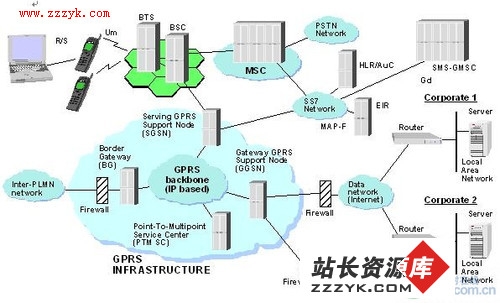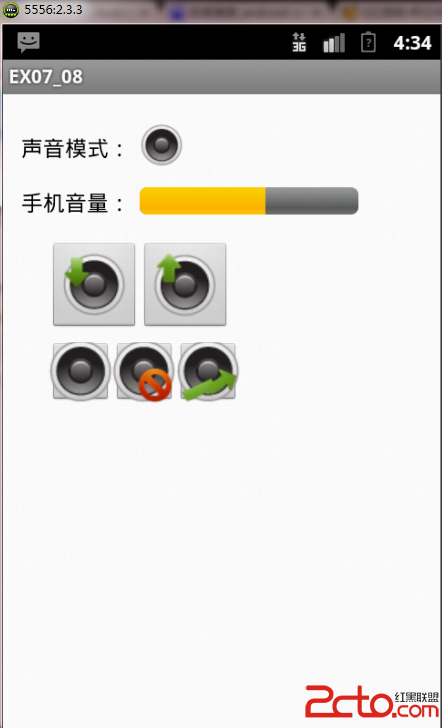Android - LayoutInflater
在实际开发中LayoutInflater这个类还是非常有用的,它的作用类似于findViewById()。不同点是LayoutInflater是用来找res/layout/下的xml布局文件,并且实例化;而findViewById()是找xml布局文件下的具体widget控件(如 Button、TextView等)。
具体作用:
1、对于一个没有被载入或者想要动态载入的界面,都需要使用LayoutInflater.inflate()来载入;
2、对于一个已经载入的界面,就可以使用Activiyt.findViewById()方法来获得其中的界面元素。
LayoutInflater 是一个抽象类,在文档中如下声明:
Java代码 public abstract class LayoutInflater extends Object
[java] public abstract class LayoutInflater extends Object
public abstract class LayoutInflater extends Object
获得 LayoutInflater 实例的三种方式:
Java代码 1. LayoutInflater inflater = getLayoutInflater(); //调用Activity的getLayoutInflater()
2. LayoutInflater localinflater = (LayoutInflater)context.getSystemService
(Context.LAYOUT_INFLATER_SERVICE);
3. LayoutInflater inflater = LayoutInflater.from(context);
[java] 1. LayoutInflater inflater = getLayoutInflater(); //调用Activity的getLayoutInflater()
2. LayoutInflater localinflater = (LayoutInflater)context.getSystemService
(Context.LAYOUT_INFLATER_SERVICE);
3. LayoutInflater inflater = LayoutInflater.from(context);
1. LayoutInflater inflater = getLayoutInflater(); //调用Activity的getLayoutInflater()
2. LayoutInflater localinflater = (LayoutInflater)context.getSystemService
(Context.LAYOUT_INFLATER_SERVICE);
3. LayoutInflater inflater = LayoutInflater.from(context);
其实,这三种方式本质是相同的,从源码中可以看出:
getLayoutInflater():
Activity 的 getLayoutInflater() 方法是调用 PhoneWindow 的getLayoutInflater()方法,看一下该源代码:
Java代码 public PhoneWindow(Context context) {
super(context);
mLayoutInflater = LayoutInflater.from(context);
}
[java] public PhoneWindow(Context context) {
super(context);
mLayoutInflater = LayoutInflater.from(context);
}
public PhoneWindow(Context context) {
super(context);
mLayoutInflater = LayoutInflater.from(context);
}
可以看出它其实是调用 LayoutInflater.from(context)。
LayoutInflater.from(context):
Java代码 public static LayoutInflater from(Context context) {
LayoutInflater LayoutInflater =
(LayoutInflater) context.getSystemService(Context.LAYOUT_INFLATER_SERVICE);
if (LayoutInflater == null) {
throw new AssertionError("LayoutInflater not found.");
}
return LayoutInflater;
}
[java] public static LayoutInflater from(Context context) {
LayoutInflater LayoutInflater =
(LayoutInflater) context.getSystemService(Context.LAYOUT_INFLATER_SERVICE);
if (LayoutInflater == null) {
throw new AssertionError("LayoutInflater not found.");
}
return LayoutInflater;
}
public static LayoutInflater from(Context context) {
LayoutInflater LayoutInflater =
(LayoutInflater) context.getSystemService(Context.LAYOUT_INFLATER_SERVICE);
if (LayoutInflater == null) {
throw new AssertionError("LayoutInflater not found.");
}
return LayoutInflater;
}
可以看出它其实调用 context.getSystemService()。
结论:所以这三种方式最终本质是都是调用的Context.getSystemService()。
inflate 方法
通过 sdk 的 api 文档,可以知道该方法有以下几种过载形式,返回值均是 View 对象,如下:
Java代码 public View inflate (int resource, ViewGroup root)
public View inflate (XmlPullParser parser, ViewGroup root)
public View inflate (XmlPullParser parser, ViewGroup root, boolean attachToRoot)
public View inflate (int resource, ViewGroup root, boolean attachToRoot)
[java] public View inflate (int resource, ViewGroup root)
public View inflate (XmlPullParser parser, ViewGroup root)
public View inflate (XmlPullParser parser, ViewGroup root, boolean attachToRoot)
public View inflate (int resource, ViewGroup root, boolean attachToRoot)
public View inflate (int resource, ViewGroup root)
public View inflate (XmlPullParser parser, ViewGroup root)
public View inflate (XmlPullParser parser, ViewGroup root, boolean attachToRoot)
public View inflate (int resource, ViewGroup root, boolean attachToRoot)
1:
public View inflate (int resource, ViewGroup root)
reSource:View的layout的ID
root:如果为null,则将此View作为根,此时既可以应用此View中的其他控件了。
如果!null, 则将默认的layout作为View的根。
2:
public View inflate ( XmlPullParser parser, ViewGroup root)
parser:你需要解析xml的解析接口www.zzzyk.com
root:如果null,则将此View作为根,此时既可以应用此View中的其他控件了。
如果!null, 则将默认的layout作为View的根。
3:
public View inflate ( XmlPullParser parser, ViewGroup root, boolean attachToRoot)
parser:你需要解析View的xml的解析接口
root:如果null,则将此View作为根,此时既可以应用此View中的其他控件了。
如果!null, 则将默认的layout作为View的根。
attachToRoot:
ture:也就将此解析的xml作为View根
fase:则为默认的xml,做为根视图View
4:
public View inflate (int resource, ViewGroup root, boolean attachToRoot)
resource:View的layout的ID
root:如果null,则将此View作为根,此时既可以应用此View中的其他控件了。
如果!null, 则将默认的layout作为View的根。
attachToRoot:
ture:也就将此解析的xml作为View根
fase:则为默认的xml,做为根视图View
示意代码:
Java代码 LayoutInflater inflater = (LayoutInflater)getSystemService(LAYOUT_INFLATER_SERVICE);
View view = inflater.inflate(R.layout.custom, (ViewGroup)findViewById(R.id.test));
//EditText editText = (EditText)findViewById(R.id.content);// error
EditText editText = (EditText)view.findViewById(R.id.content);
[java] LayoutInflater inflater = (LayoutInflater)getSystemService(LAYOUT_INFLATER_SERVICE
补充:移动开发 , Android ,




